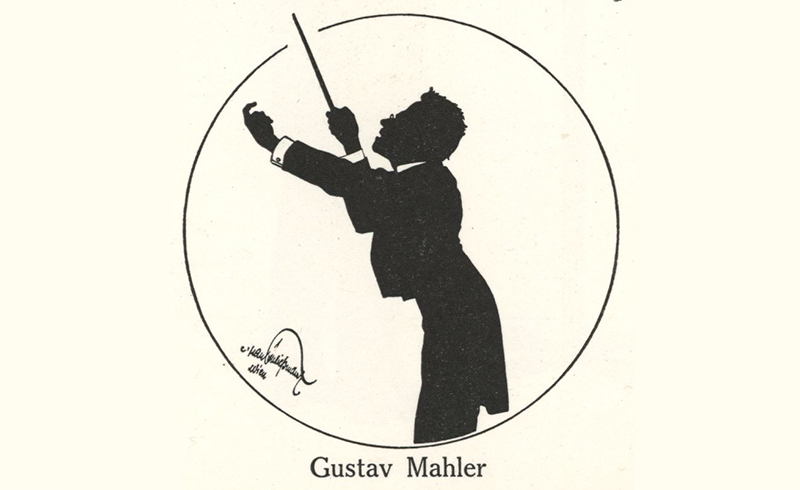Gustav Mahler
Gustav Mahler (1860–1911) stands as one of the most influential and innovative composers of the late Romantic Era. Born in Bohemia (now part of the Czech Republic), he demonstrated exceptional musical talent from a young age. He received formal training in Vienna and quickly established himself as a gifted conductor, serving in prestigious positions, including the Vienna Court Opera and the New York Philharmonic. As a

composer, Mahler’s symphonies, spanning nine works (or ten, depending on whom you ask), are epic in scale and are characterized by their vast emotional range, exploring themes of love, fate, and existential angst. His music often reflects his own personal struggles, including his complex relationship with his wife, Alma Mahler. Despite facing criticism during his lifetime, Mahler’s music has since earned widespread acclaim and admiration for its profound emotional impact and visionary scope. Today, Mahler’s legacy endures through his compositions and influence on subsequent generations of composers and musicians.
Symphony No. 6 in A Minor, Tragic
Mahler composed his Symphony No. 6, Tragic between 1903 and 1904 at the peak of his professional life as a conductor, serving as the director of the Vienna Court Opera. While Europe was experiencing a significant political and social upheaval, with tensions building up to World War I, Mahler’s personal life was marked by turmoil, including strained relationships and health issues. However, this was also a period of intense creativity for Mahler, having just completed his Symphony No. 5 a year prior. Vienna, where Mahler lived and worked, was a vibrant cultural hub with flourishing artistic movements and intellectual debates. For his sixth symphony, Mahler drew inspiration from philosophical and literary sources and was deeply influenced by the philosophical writings of Friedrich Nietzsche, particularly with his concept of “eternal recurrence” and the idea of embracing life’s challenges with courage and resilience, and Austrian poet Heinrich Leopold Wagner, whose themes of destiny and human suffering resonated deeply with Mahler. The symphony’s title, Tragic, reflects Mahler’s engagement with the tragic worldview prevalent in literature and drama.
The musical landscape of the time was characterized by a shift towards modernism, with composers experimenting with new harmonic languages and forms. Yet, Mahler faced challenges in finding acceptance for his avant-garde compositions, which often pushed the boundaries of traditional musical forms. Mahler’s Sixth Symphony was part of a larger movement of symphonic composition, with composers like Richard Strauss and Jean Sibelius also making significant contributions to the genre. The premiere was met with mixed reviews, with some critics praising its emotional depth and innovative orchestration, while others found the complexity overwhelming.
The “Missing” Movement
This symphony stands out among Mahler’s other symphonic works for its departure from the traditional symphonic structure as Mahler originally placed the tender Andante moderato movement as the third movement, after the Scherzo, rather than the second. The Andante moderato, with its lyrical melodies and introspective mood, serves as a poignant interlude between the symphony’s more turbulent outer movements. By placing the slow movement in an unconventional position, Mahler invited listeners to reevaluate their understanding of symphonic form and narrative structure. Some speculated that this placement enhanced the symphony’s emotional impact, allowing for a moment of introspection and respite after the intense Scherzo movement. Others contended that the Andante moderato’s position disrupted the overall narrative flow, leading to a loss of momentum and coherence.
The placement of the Andante moderato movement has sparked a spirited debate among scholars and conductors. Mahler finished (1904) and published (1906) the symphony with the Scherzo as the second movement and the Andante moderato as the third, but after a May rehearsal in 1906 in preparation for the premiere, Mahler rearranged the movements and decided the Andante moderato should precede the Scherzo, which is how the Houston Symphony will perform it on March 15, 16 & 17. Mahler then instructed his publishers to publish a second edition in this order, Andante Moderato then Scherzo, and asked them to insert an erratum into every copy of the first edition, making sure the symphony would always be played with the slow movement second.
The Tragic Alma Theme
Throughout the symphony, Mahler weaves a recurring musical motif known as the “Alma theme,” named after his wife. This haunting melody, first introduced in the opening movement, serves as a leitmotif representing Mahler’s conflicted feelings towards Alma and adds a layer of autobiographical depth to the symphony’s narrative. The Alma theme undergoes various transformations throughout the symphony, reflecting the complexity of Mahler’s emotions and the tumultuous nature of their relationship. Their relationship was marked by profound emotional highs
and lows, passionate love, and intense conflict. Their marriage was plagued by jealousy, infidelity, and artistic rivalry, creating a volatile dynamic that deeply influenced Mahler’s personal life and creative output. Some interpret the theme as a reflection of Mahler’s internal struggles with love, loss, and mortality. At the same time, others see it as a representation of Alma’s enduring influence on his life and work. Regardless, the Alma theme adds a layer of tragic depth to Symphony No. 6, capturing the essence of Mahler’s turbulent personal life and artistic vision.
The Mysterious Hammer Blows
Mahler’s Sixth Symphony requires an instrument named after Mahler himself because it was developed specifically for this symphony. Named the Mahler “Box and Hammer,” this percussion instrument has become most closely identifiable with the “hammer blows of fate.” Positioned strategically within the final movement, each strike reverberates through the orchestral fabric with chilling inevitability. Scholars and listeners alike have pondered their meaning, speculating on their connection to Mahler’s own life or the broader human experience. The precise meaning of the hammer blows remains elusive, inviting listeners to interpret them in light of their own experiences and perspectives. Regardless of interpretation, the blows serve as a poignant reminder of life’s fragility and the inevitability of fate. As Mahler once wrote, “The music is not in the notes, but in the silence between.” Indeed, the silence that follows each hammer blow speaks volumes, echoing the weight of destiny and the unknown.
Experience Mahler's Symphony No. 6 under the baton of Music Director Juraj Valčuha on March 15, 16 & 17 as part of the Tragedy & Triumph Festival.




